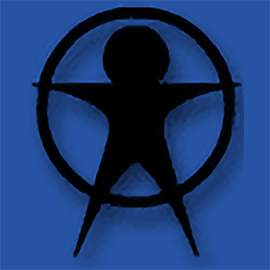North America/United States of America/Pennsylvania/Philadelphia/University of Pennsylvania/
University of Pennsylvania
- Location & Contact Information
- Address, Directions, & Map:
- 3451 Walnut Street, Philadelphia, Pennsylvania, United States of America
- Telephone Numbers: 215-898-5000
- Official Website: [2]
- Address, Directions, & Map:
- History & Memorable Moments
In 1740, a group of Philadelphians joined together to erect a great preaching hall for the evangelist Rev. George Whitefield. Designed and built by Edmund Woolley, it was the largest building in the city and it was also planned to serve as a charity school. The fundraising, however, fell short and although the building was erected, the plans for both a chapel and the charity school were suspended. In the fall of 1749, eager to create a college to educate future generations, Benjamin Franklin circulated a pamphlet titled "Proposals for the Education of Youth in Pennsylvania," his vision for what he called a "Public Academy of Philadelphia." However, according to Franklin's autobiography, it was in 1743 when he first drew up a proposal for establishing the academy, "thinking the Rev. Richard Peters a fit person to superintend such an institution." Unlike the other three American Colonial colleges that existed at the time — Harvard, William and Mary, and Yale — Franklin's new school would not focus merely on education for the clergy. He advocated an innovative concept of higher education, one which would teach both the ornamental knowledge of the arts and the practical skills necessary for making a living and doing public service. The proposed program of study became the nation's first modern liberal arts curriculum. [1]
Franklin assembled a board of trustees from among the leading citizens of Philadelphia, the first such non-sectarian board in America. At the first meeting of the 24 members of the Board of Trustees (November 13, 1749) the issue of where to locate the school was a prime concern. Although a lot across Sixth Street from Independence Hall was offered without cost by James Logan, its owner, the Trustees realized that the building erected in 1740, which was still vacant, would be an even better site. On February 1, 1750 the new board took over the building and trusts of the old board. In 1751 the Academy, using the great hall at 4th and Arch Streets, took in its first students. A charity school also was opened in accordance with the intentions of the original "New Building" donors, although it lasted only a few years. [1]
For its date of founding, the University uses 1740, the date of "the creation of the earliest of the many educational trusts the University has taken upon itself" (the charity school mentioned above) during its existence. [1]
The institution was known as the College of Philadelphia from 1755 to 1779. In 1779, not trusting then-provost Rev. William Smith's loyalist tendencies, the revolutionary State Legislature created a University of the State of Pennsylvania. The result was a schism, with Rev. William Smith continuing to operate an attenuated version of the College of Philadelphia. In 1791 the legislature issued a new charter, merging the two institutions into the University of Pennsylvania with twelve men from each institution on the new board of trustees. These three schools were part of the same institution and were overseen by the same board of Trustees. [1]
Penn has two claims to being the first university in the United States, according to university archive director Mark Frazier Lloyd: founding the first medical school in America in 1765, makes it the first university de facto, while, by virtue of the 1779 charter, "no other American institution of higher learning was named University before Penn." [1]
After being located in downtown Philadelphia for more than a century, the campus was moved across the Schuylkill River to property purchased from the Blockley Almshouse in West Philadelphia in 1872, where it has since remained in an area now known as University City. [1]
- Overview, Photographs, & Video Links
Prospective Students
- Admissions Tips
New & Current Students
- Campus Events
- Transportation
- Safety Tips
- Support Centers
- Counseling
- Grading System
- Good Classes & Teachers
- Groups & Organizations
- College & Career Tips
Alumni
- Benefits of Joining Alumni Association
- Mailing List Directory
- Chapters
- Teachers (Where are they now?)
- Demko, Bea (February 2002 - Present)
- Friend, B (February 1993 - Present)
- Iannitti, Thomas (January 1999 - Present)
- Jonnalagadda, Subash Chandra (August 2005 - August 2007)
- Kaul, Rajeev (August 2004 - Present)
- Latney, Brande (April 2002 - Present)
- Parra-Hernandez, Maria Andreina (June 2003 - July 2004)
- Phillips, Peter (April 1991 - Present)
- Alumni Directory
- Alumni Events
Visitors
- Hotels Nearby
- Restaurant Recommendations
- Places of Worship
- Sports Facility Access

